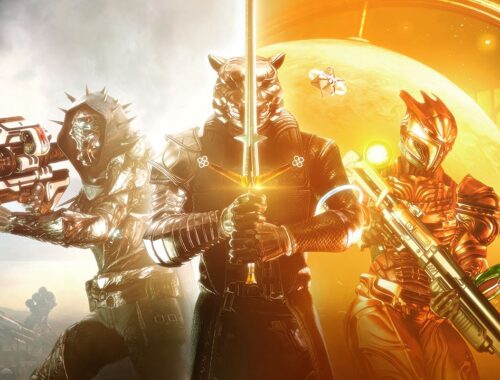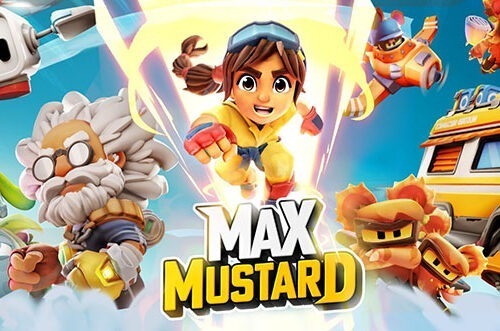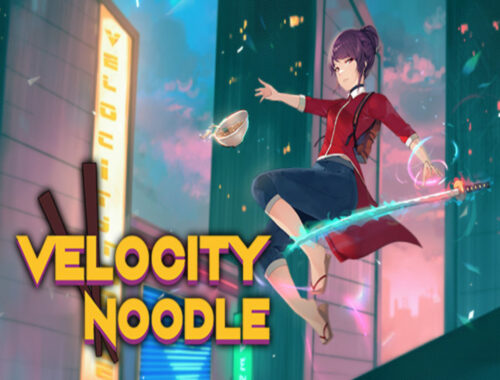Sunblaze Review
Fast Facts
Sunblaze
Developer: Games from Earth
Publisher: Bonus Stage Publishing
Website: https://sunblazegame.com/
Genre(s): Platformer, Action, Arcade, Puzzle
Platform: Nintendo Switch
Age Rating: PEGI 16
Release Date: 03/06/2021
Price: £13.49
A code was provided for review purposes
Introduction
Sunblaze is a precision platformer that details the predicament that arises when Josie, the protagonist, gets locked in a virtual reality training program. I helped her fight her way through a variety of levels and tried to reconnect her with the real world. Does this training pay off? Or was it time poorly spent? Find out in this Rapid Review.
Algorithm is Canon
This story begins simply. Josie and her father are experimenting with her father’s latest creation: a training program for Josie. Her training is led by an AI. It creates the levels to test her experience and expertise. It perfectly establishes a premise for the game.
Moreover, the virtual reality setting helped justify the seemingly sporadic and random level design. Unlike other precision platformers, Sunblaze had me jumping on randomly floating platforms that would fall soon after feeling my weight. It was novel and still made continuous sense. The story explained the context of the game expertly.
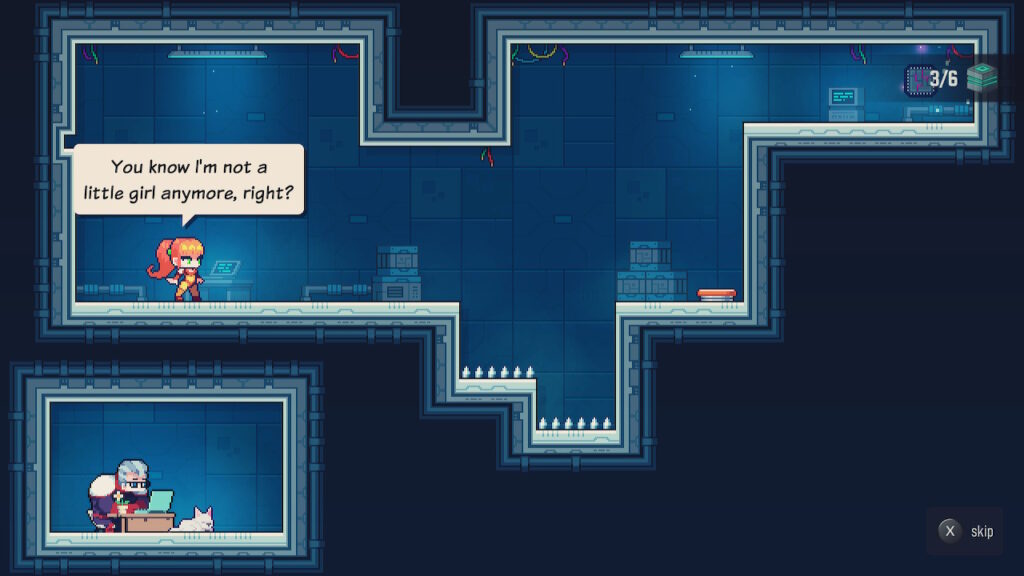
Additionally, Sunblaze features dialogue between the various characters. It was a nice addition, but the characters never talked about anything meaningful. Though typically not important, the dialogue involved me in the lives of the characters, and I got to see the teenage rebellion from Josie turn into concern for her father once she realized the severity of the situation.
There were no story elements that were particularly engaging, but together all these elements combine to create a loveable world and cast. I would not recommend Sunblaze to someone looking for a narrative adventure, but the supplemental storytelling was a pleasant bonus.
Meets Expectations
The gameplay in Sunblaze was very close to what I expected going in. I had vast movement options, needed to navigate precarious positions, and could collect objects to unlock additional stages. There is a lot of content as well. There are six chapters that each came with plenty of levels to keep me busy. Sunblaze is challenging, and mainly in a good way; I died many times before finally succeeding. Still, as I failed, I learned more about the level, and it urged me to continue playing. The longer I spent playing the game, the more I enjoyed experimenting with the physics and mechanics.
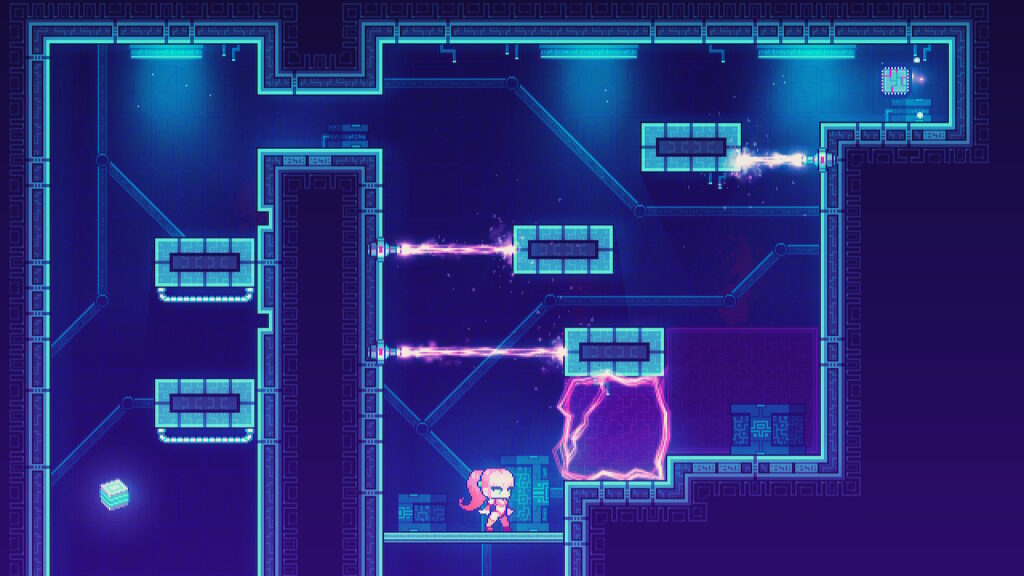
Figuring Out What to do
Even though I enjoyed Sunblaze in the end, I struggled to get comfortable with the game when I started out. Having played many action-platformers in the past, I expected to have no issues getting accustomed to this game. However, I found that the level designs had little structure. I struggled to see exactly what to do in each level until several attempts passed. Platforms would fall as I used them, meaning I could not adjust my expectations easily, and would often need to retry earlier sections various times before getting to experiment with later parts of the level. Initially, I was very off-put by the confusing level layouts. Yet as I persevered and continued mastering the levels, I began to understand the philosophy behind many of the level designs and was able to evaluate what I needed to do much more quickly.
Even though I was able to beat the levels, I often felt as though I was not completing the levels in the way the developer intended. Certain levels seemed super easy, while others required strangely advanced techniques. I needed to focus on how my actions would impact the world around me, something I was not used to doing in other action-platformer games. Unfortunately, this made me evaluate not only what I thought I should do to complete the level, but what the developer intended for me to do.
Mastering Resources
Since some levels seemed easier than others, I wondered whether I was completing the levels correctly. As I continued playing, this ideology continued compounding in my head. I learned that jumping (even when my resources were exhausted) on a certain frame above spikes would allow me to regain my resources and dash again. I could not tell whether this was a glitch or a mechanic. There were some levels where I would avoid using some of the platforms entirely, whereas in others I would need to use all the available resources. Though seemingly menial, the lack of direction from the developer made the levels more challenging to complete. I found that most of the difficulty came from misinterpreting what to do, not facing challenging traps.
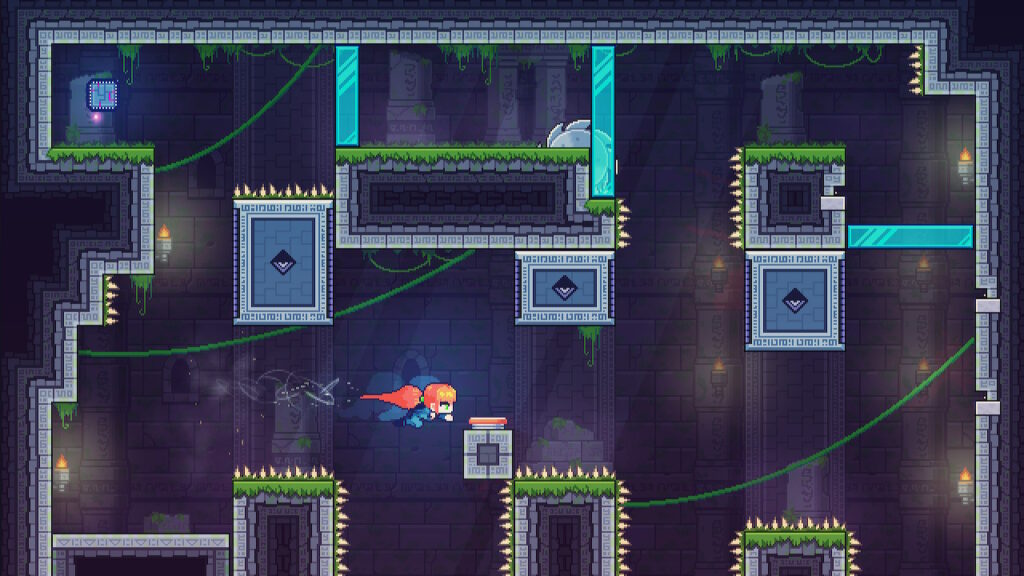
To make things worse, the levels implemented new ideas very infrequently. They often blended in with one another, and I rarely felt like an individual level was interesting. Sunblaze does introduce a fair number of concepts, but considering the large number of levels, the elements begin to feel stale. Moreover, the sporadic level design makes their implementation seem random, and as though there is little value to its inclusion. As I progressed through the game, new elements were introduced more quickly (or I was completing levels faster), and the pacing was improved. Still, I found that there were too many levels showing the same ideas and requiring the same tricks.
Lots to do
Even if the levels felt repetitive, there is a lot to experience. Sunblaze features a campaign mode, collectables to search for, and even includes bonus levels after the single-player adventure. Though it sometimes feels tedious to complete levels that are like others, Sunblaze features a lot of content.
To get through so many obstacles, I mastered the movement of the main character. Though progression requires a deep understanding of the game, the main character was easy to learn. All I had was a double jump and a dash. There was nothing else to worry about. I did not need to manage wall-jumps, nor did I learn attacking moves. I solely focused on navigating the levels. This worked well, and the character was easy to control.
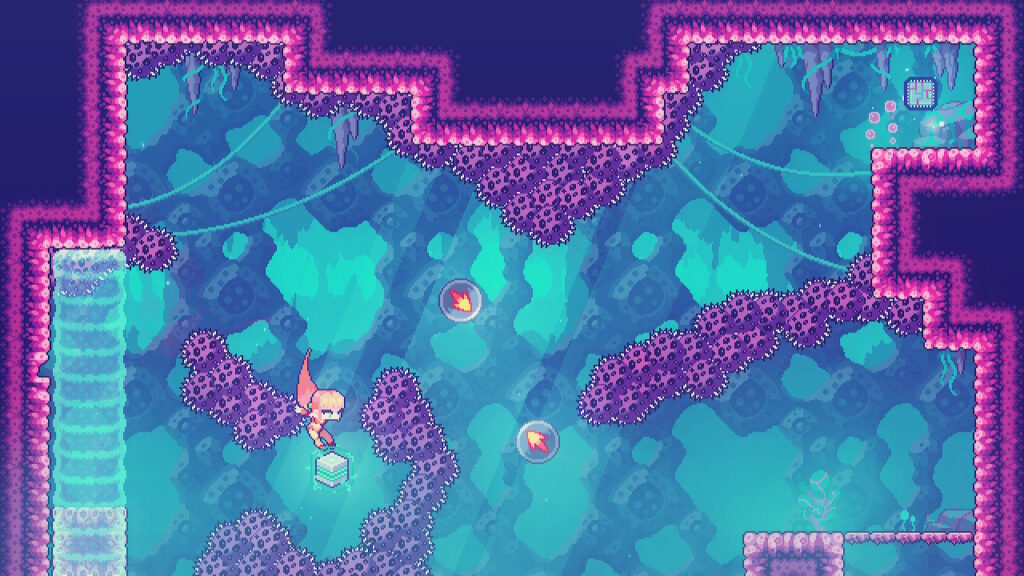
The only grievance I had with the movement relates to ledge grabbing. When holding on to a ledge, I could climb the platform by holding towards the platform. Unfortunately, this control scheme made it very easy to accidentally climb onto a platform because I was often holding down the stick to cling to the ledge in the first place. Despite some untimely deaths, this did not impact the gameplay much. Overall, Sunblaze features a dynamic and fluid character to enjoy.
Repetitive Visuals
The atmosphere of Sunblaze was a bit disappointing. I liked the pixel art, and thought the art looked good innately, the first few chapters did not feature many visual alterations. Even though there are minor changes in the backgrounds and tilesets, those chapters did not look starkly different. This is further compounded by the lack of objects that relate specifically to the environment. As I explored more intricate worlds, there were stark differences, new assets that were only related to that world, and colourful backgrounds.
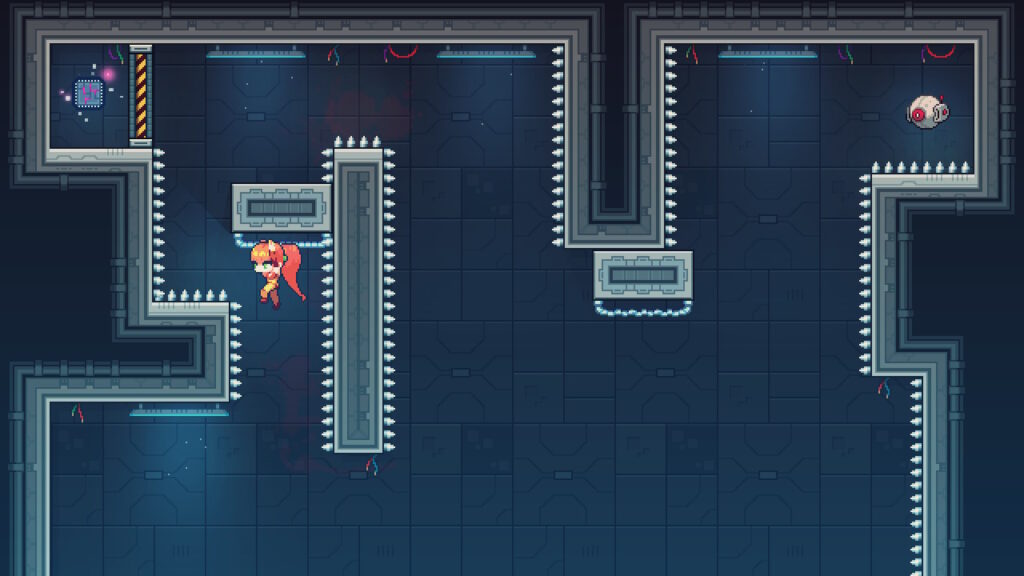
This made the initial half of the game seem significantly more tedious than the second half and could easily explain why I enjoyed the second half of the game more. Even though levels share the same theme for significant portions of time, and the visual style was sometimes boring, there were some atmospheres and environments that were interesting. My opinion of the art style varied widely throughout the experience, but it was always presentable.
The sound design was also nothing special. It served the purpose but did not keep me excited in the game. It was fine background music, but it did not leave a lasting impact on me.
Conclusion
Sunblaze is an interesting addition to the precision-platformer genre. There are many things to enjoy, such as tight movement, and innovative level design. However, there is a lot of repetitive ideas, and the levels fail to stand out. Though there are better options, I think Sunblaze still makes for a nice addition to a gaming library, and I enjoyed my experience playing it.
Rapid Reviews Rating

3.5 out of 5
3.5
You can purchase Sunblaze from the Nintendo eShop here

You can find and read our reviews on OpenCritic.



